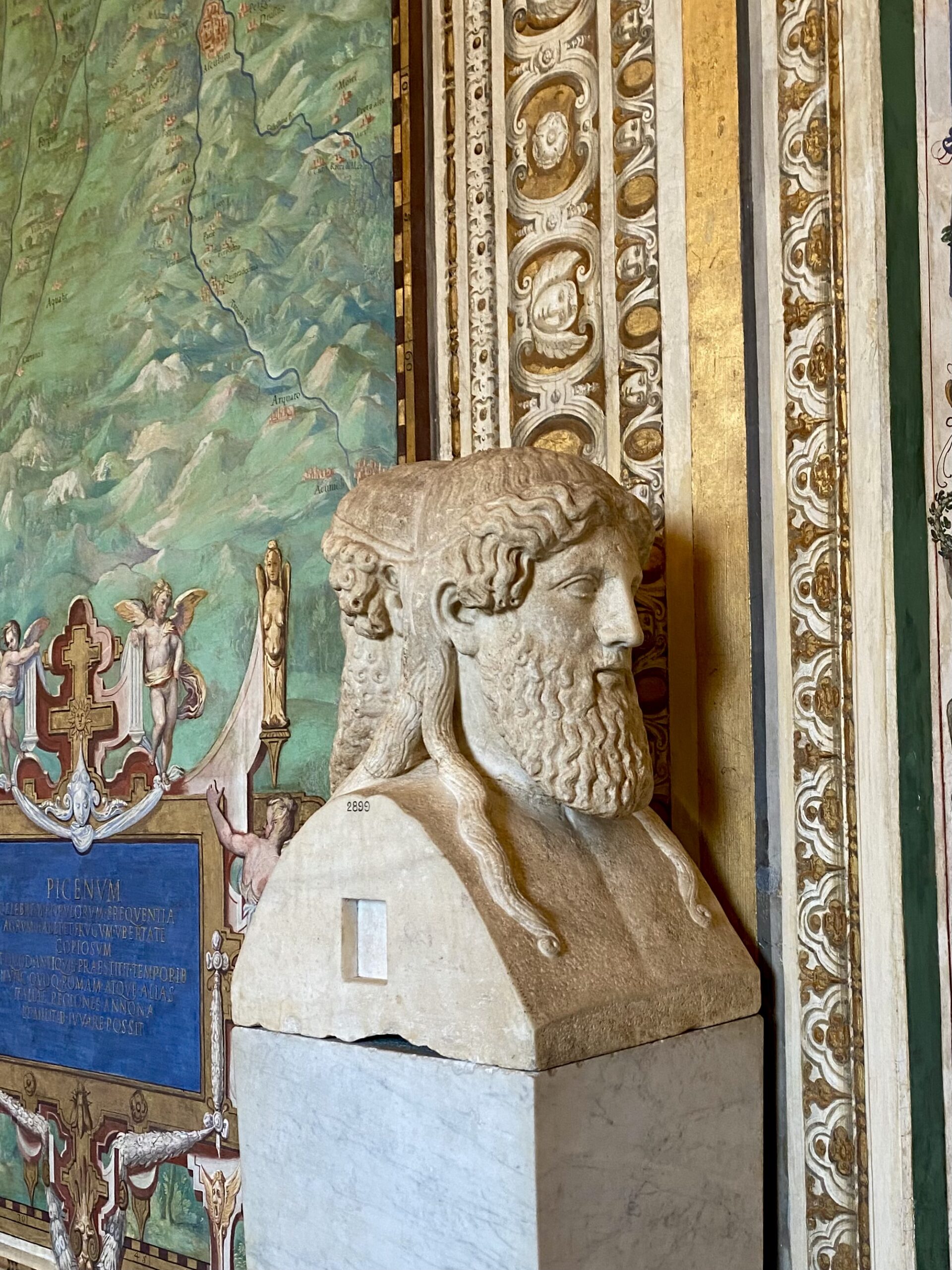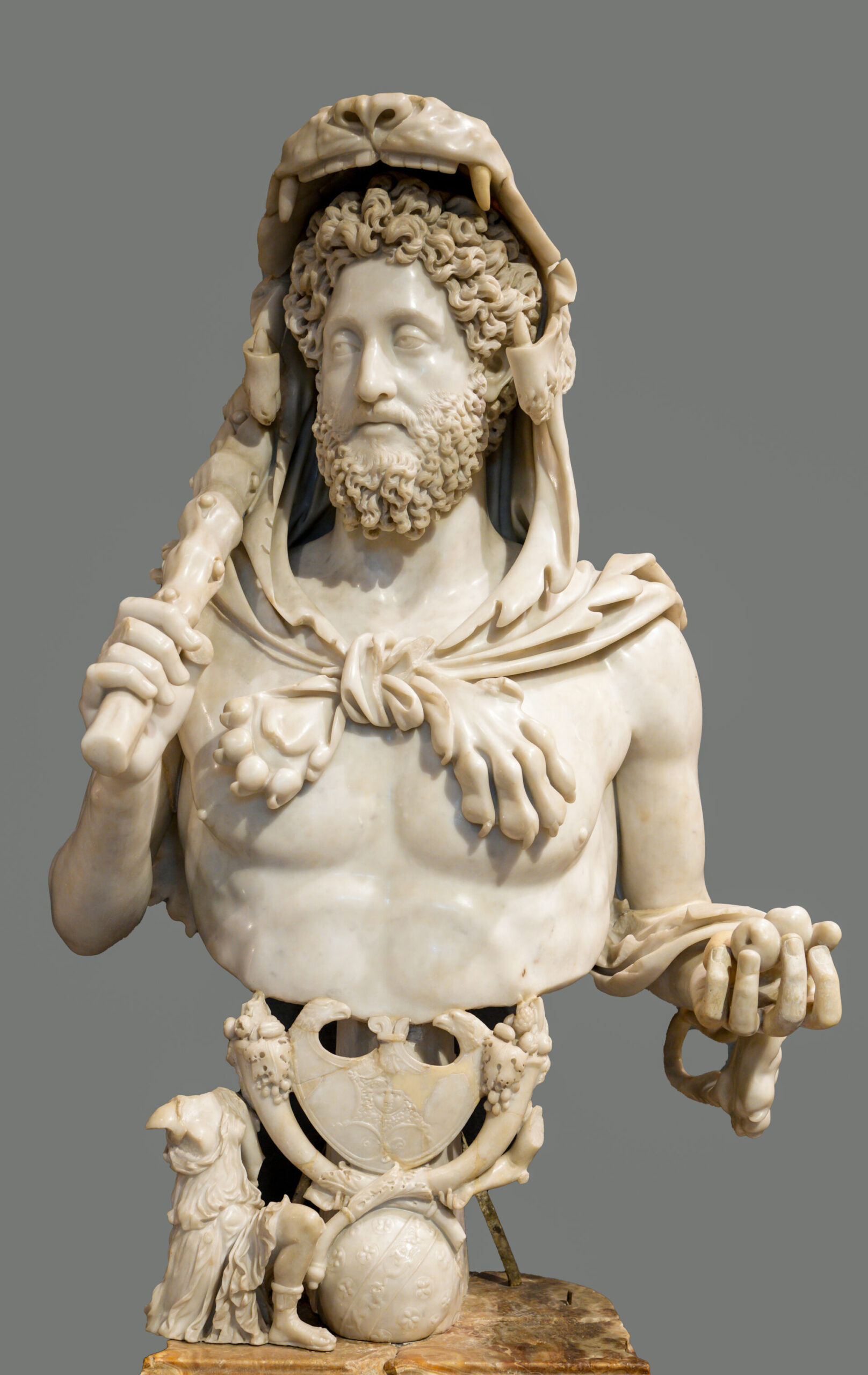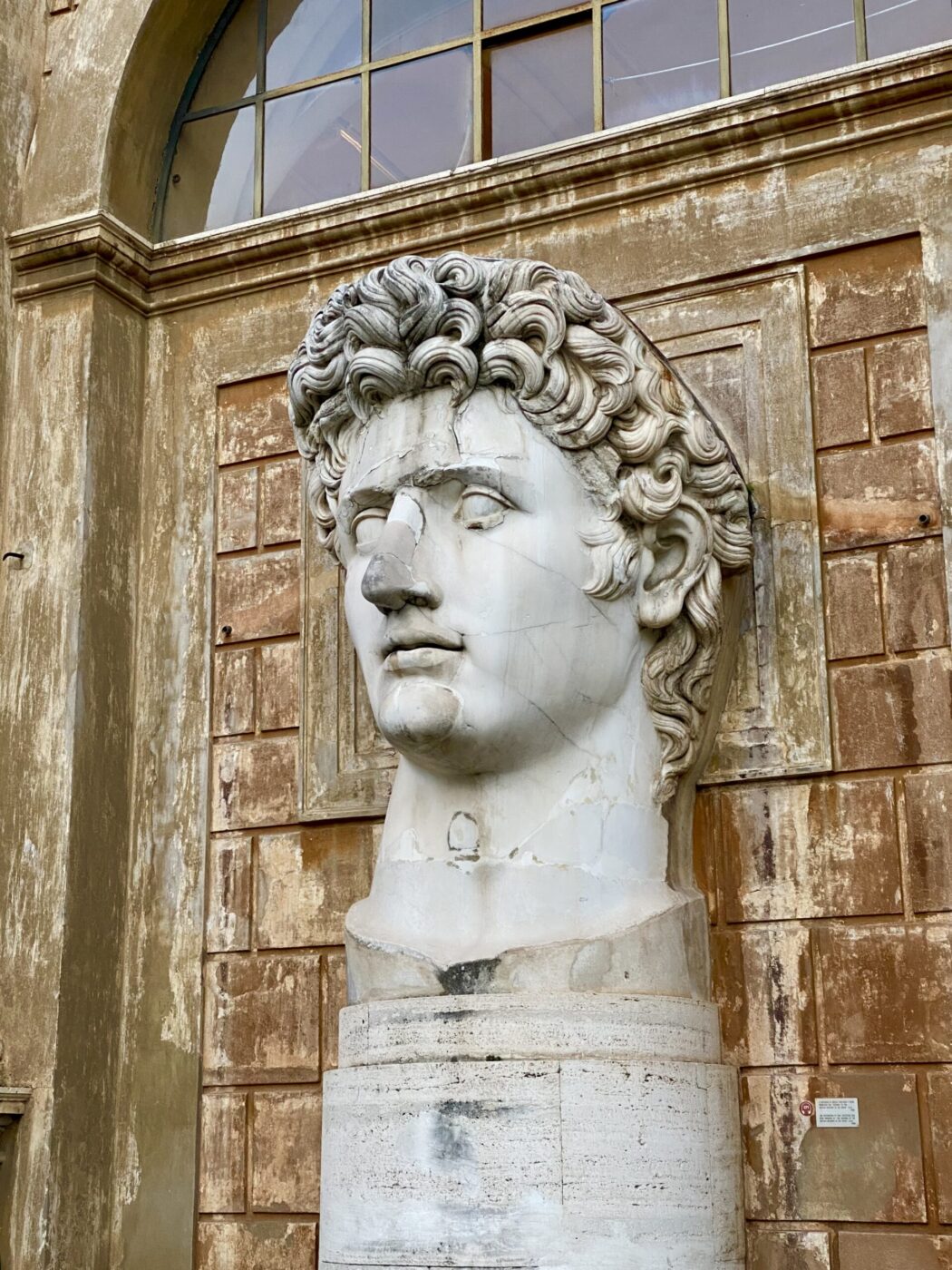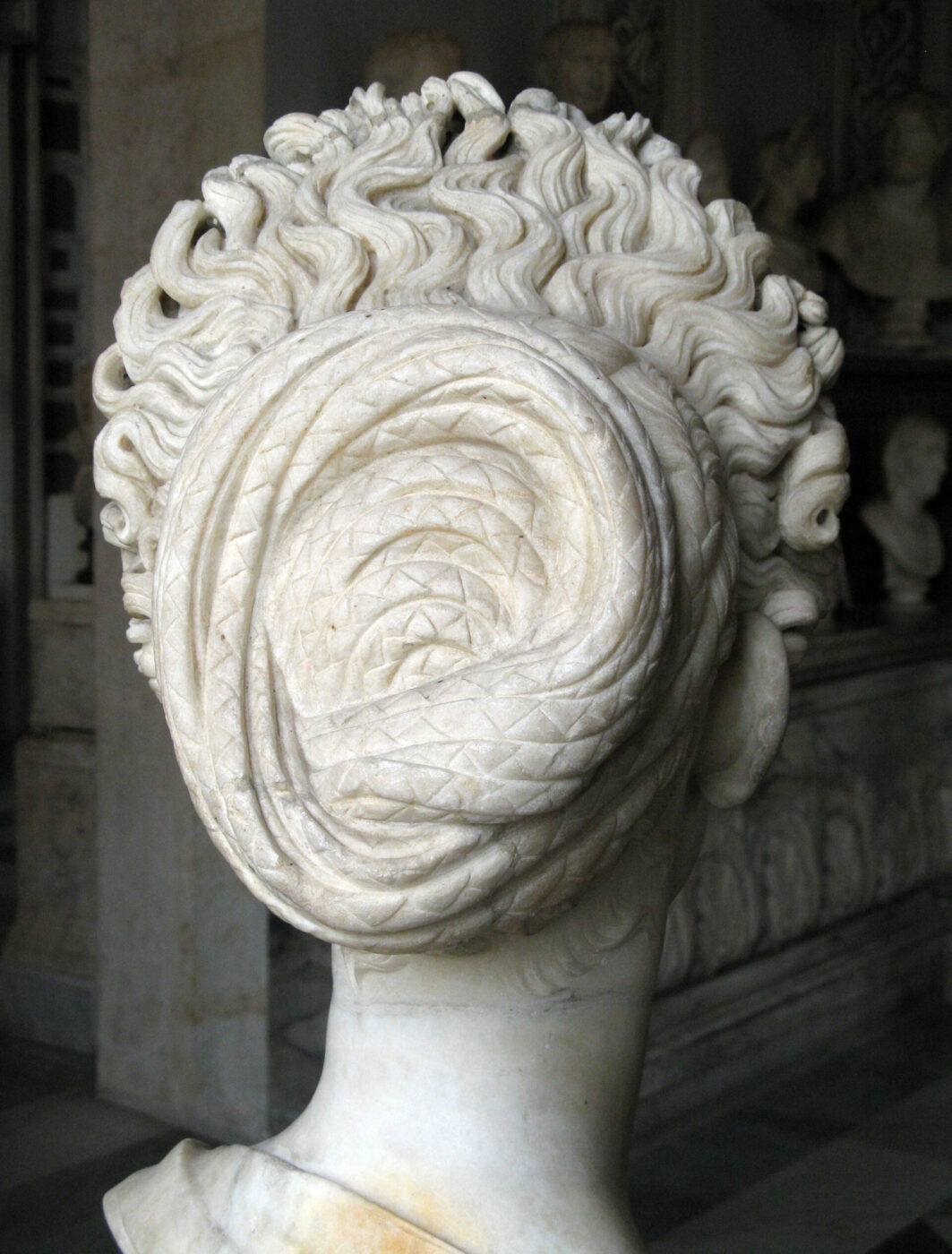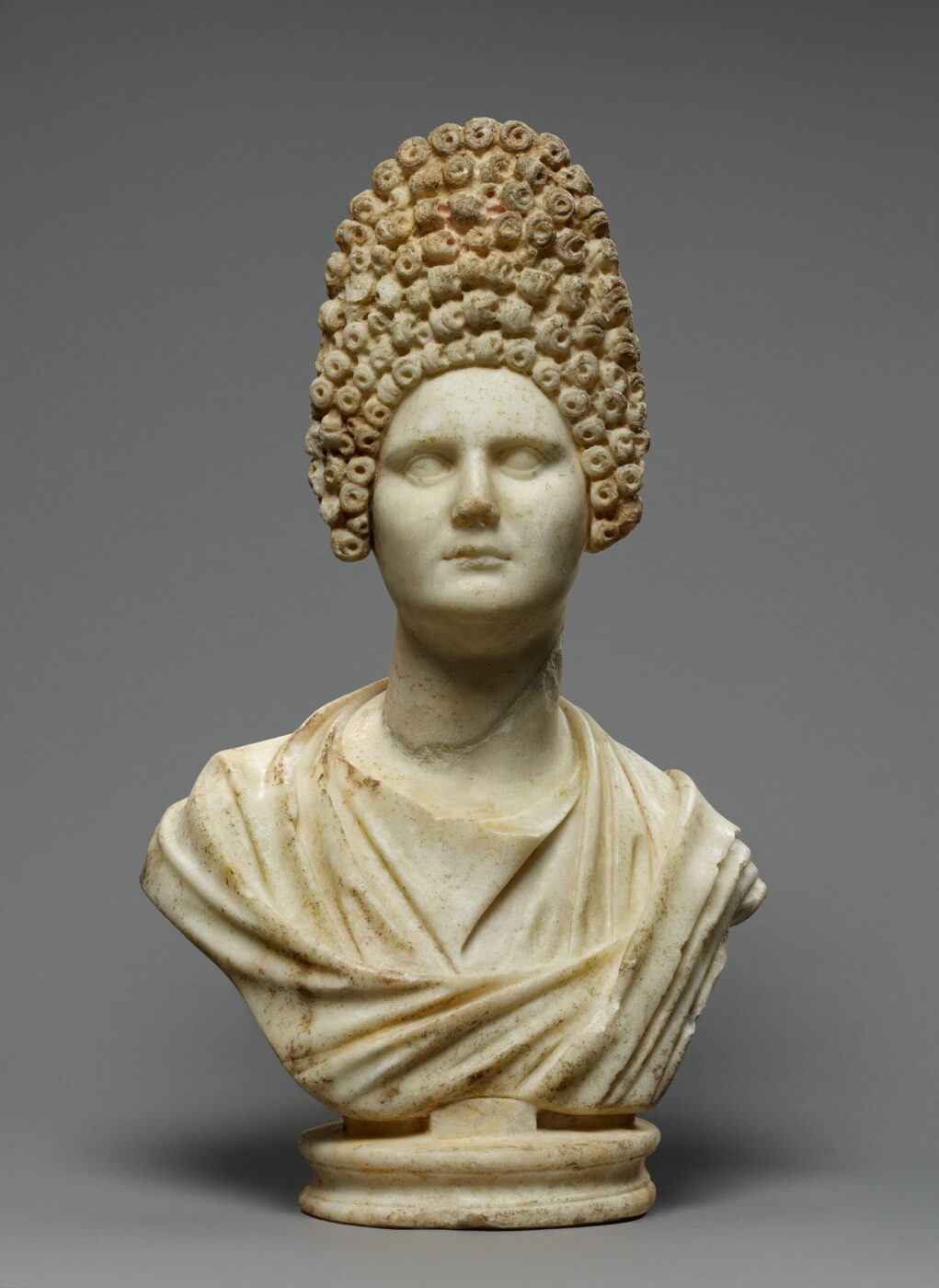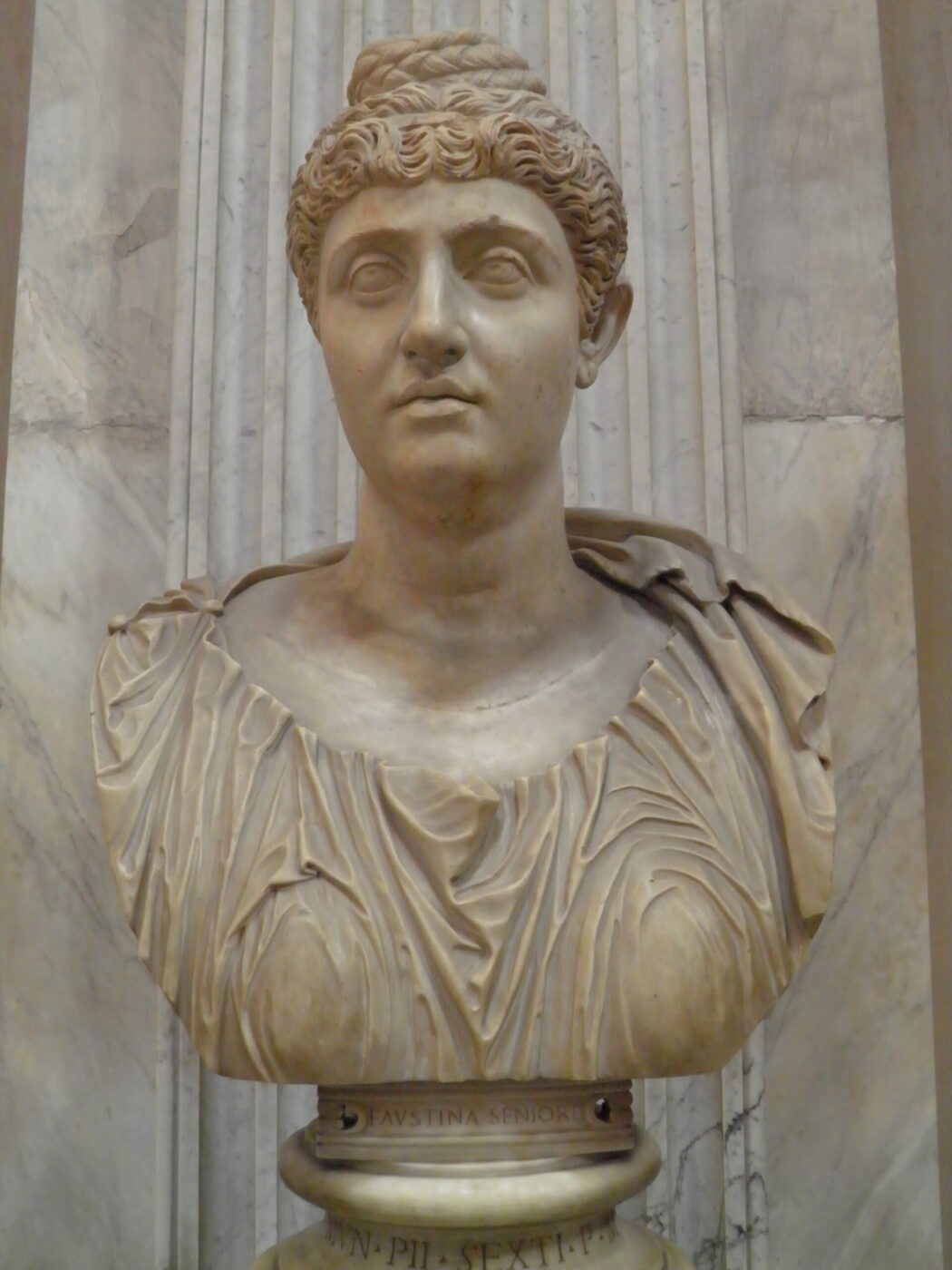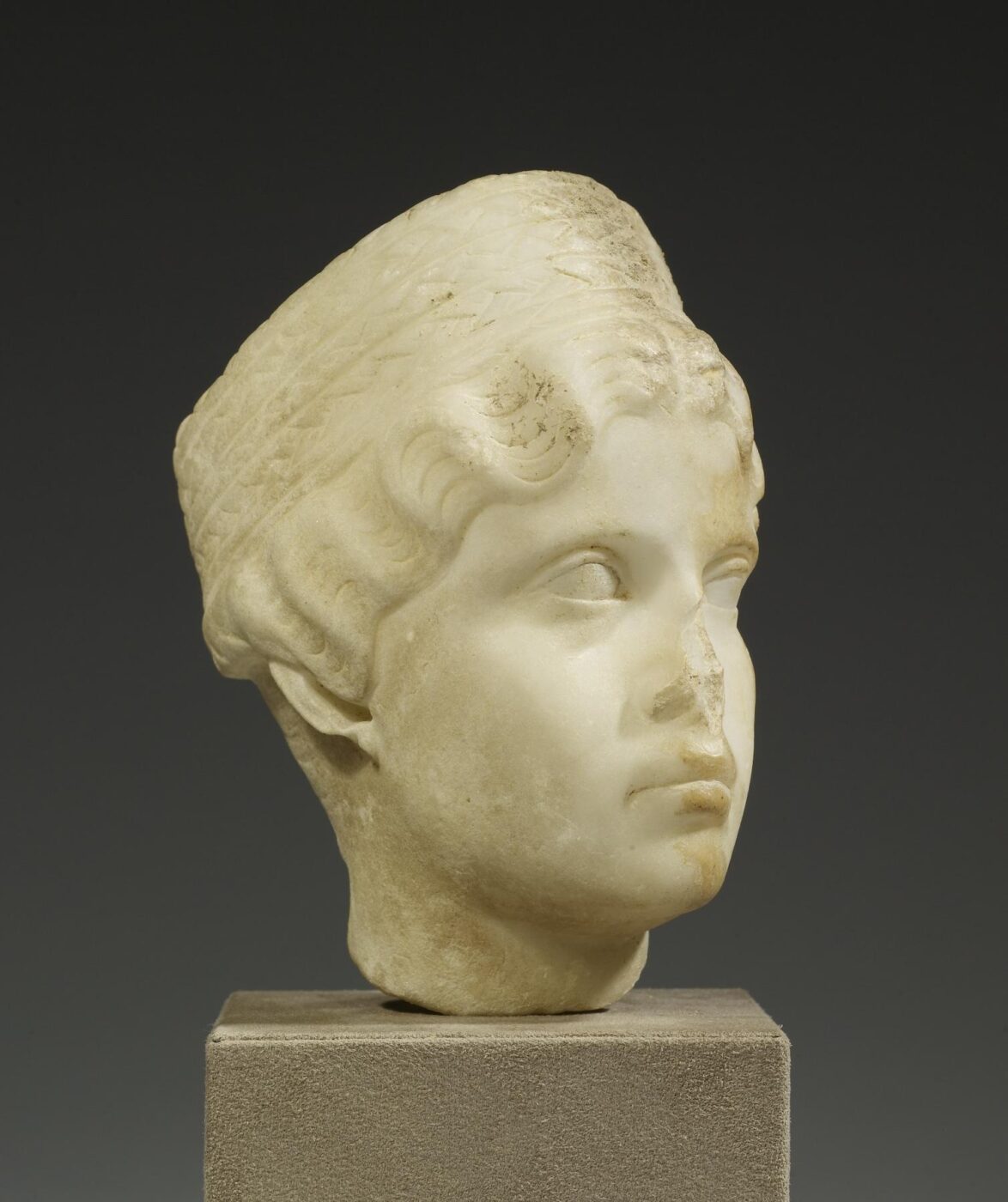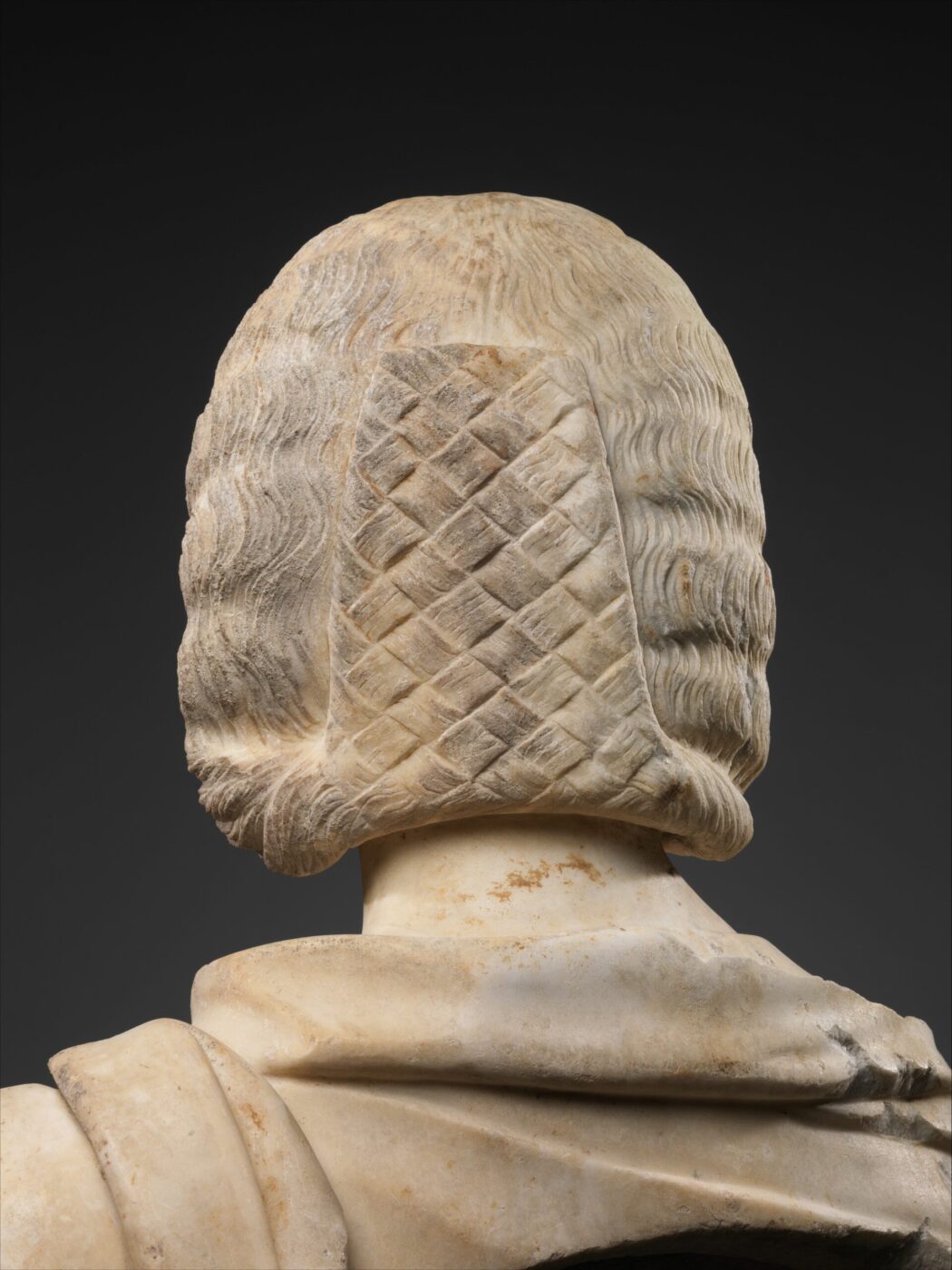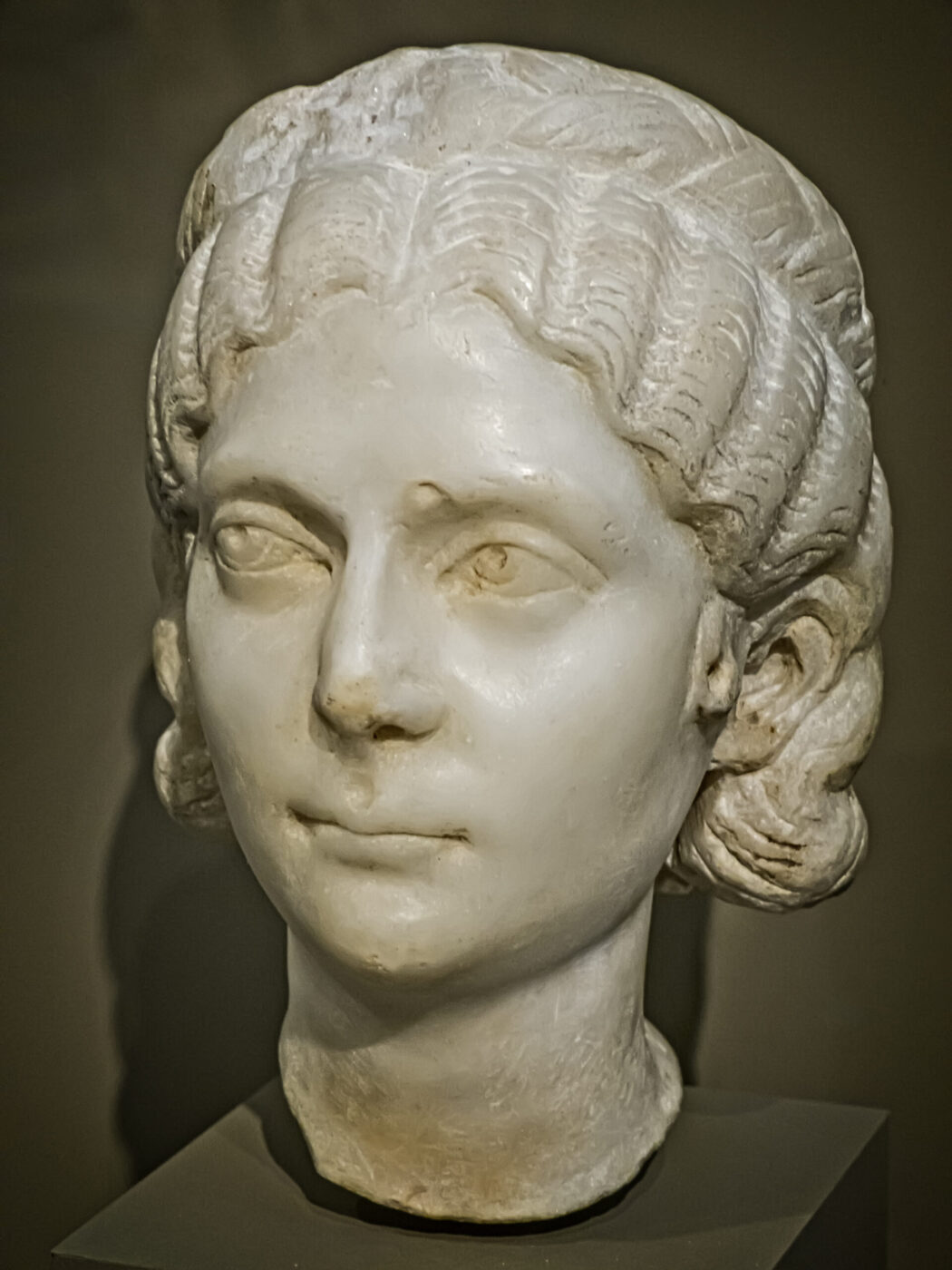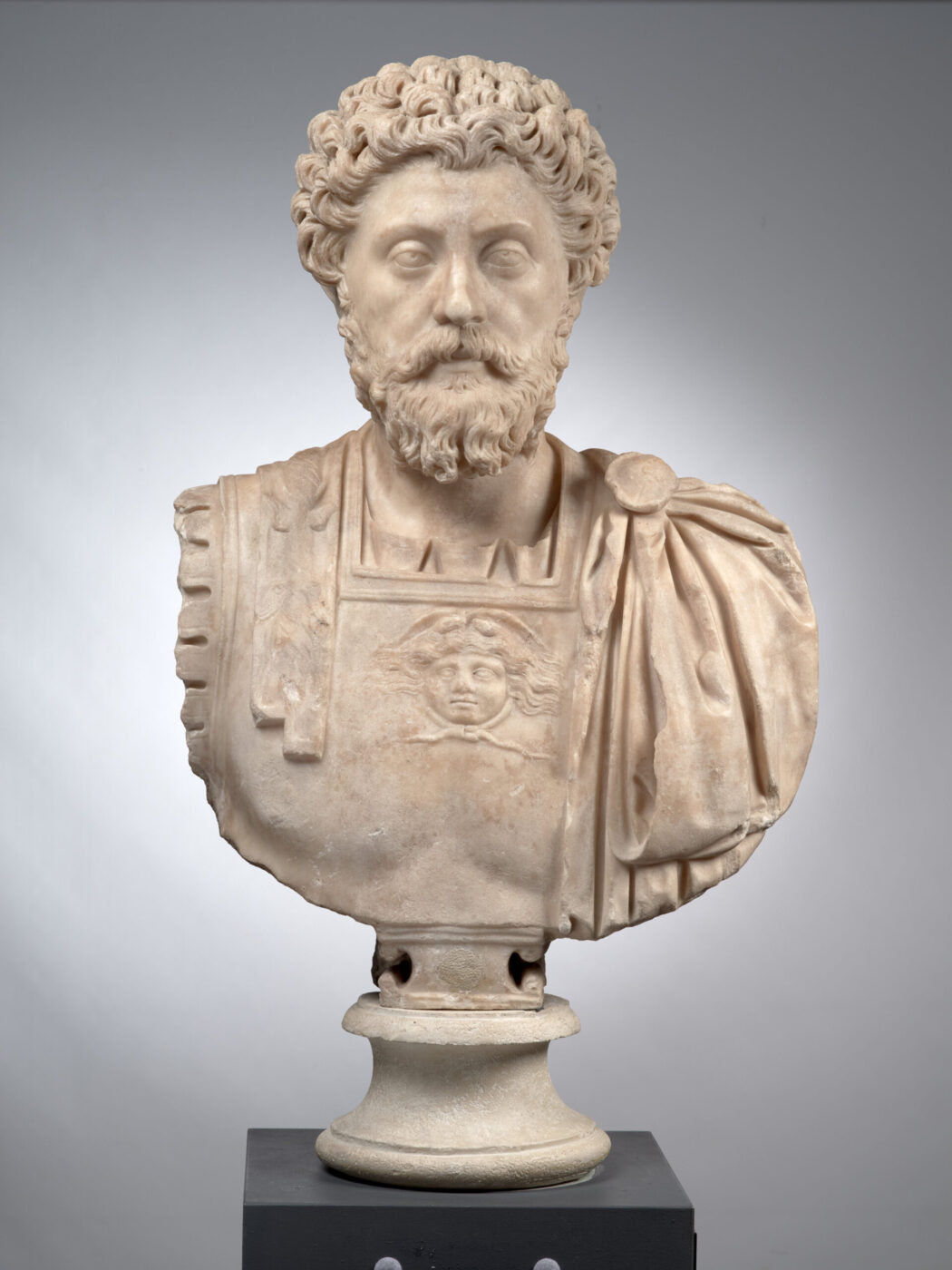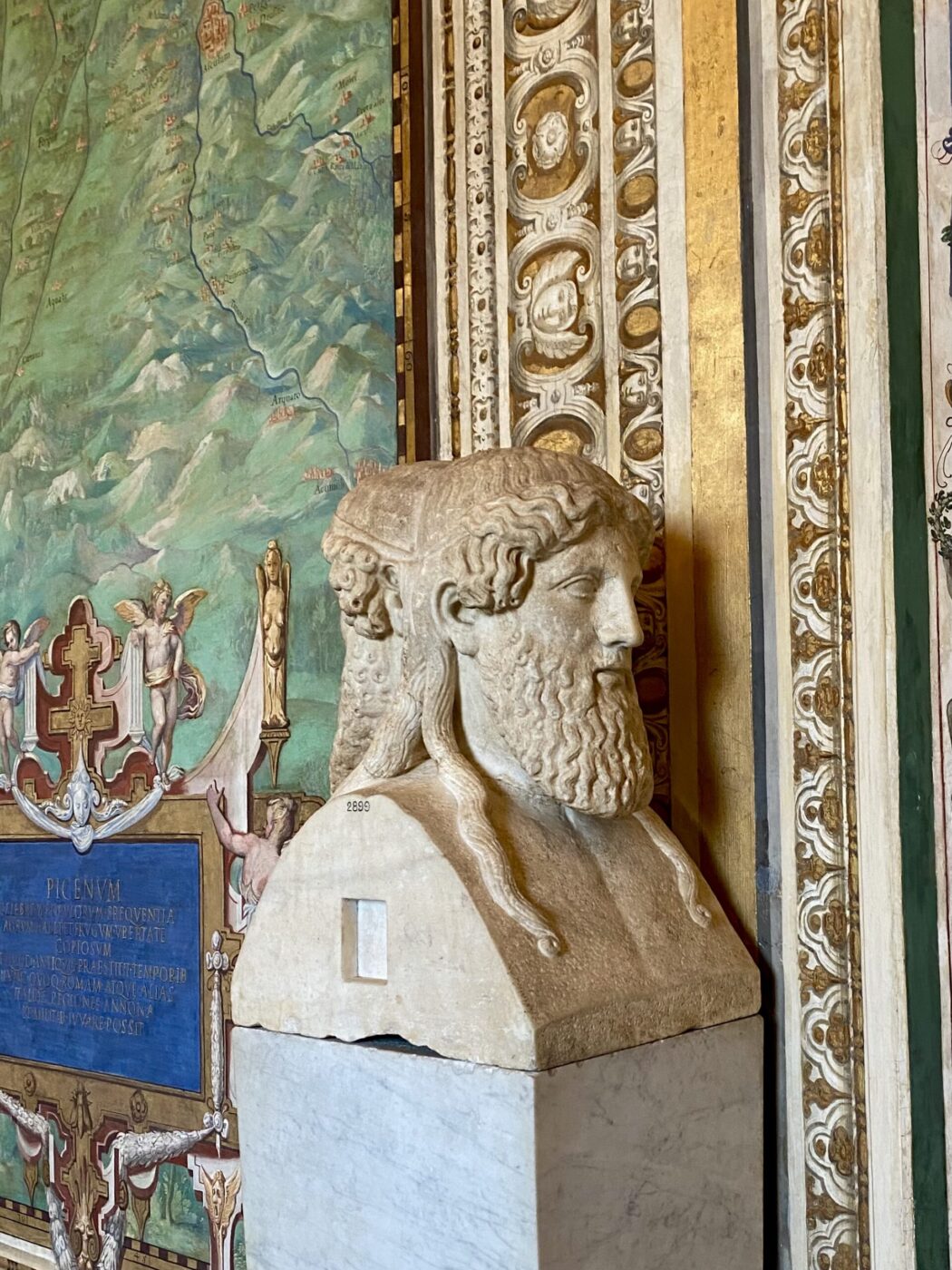Have you ever come upon that seemingly never-ending wing of busts in the Vatican Museums and sped past it? Next time, consider it an ancient fashion show of hair and spend a few extra minutes perusing the heads—for their hairstyles are a language unto themselves.
In ancient Rome, hairstyles were often ornate and exquisitely coiffed to denote, beyond a shadow of a doubt, “civilization.” The patricians were absolutely not going to be confused with their barbarian enemies (and their unkempt hair).
Coiffures were complicated both in their construction and what they signaled, from a person’s social status to their age, from their origins to their political affiliations. Glance at a bust’s hair for three seconds and you should be able to guess the sitter’s gender. If it’s parted, ding—this is a Roman woman. Men, instead, combed it forward from the crown into a supposedly macho fringe. They also chose hairstyles that required less obvious effort to distance themselves from the effeminate act of sitting with ornatrices (slave hairdressers of ancient Rome) for hours.
Hair, however, was so important to the ancient Roman man that it made its way into literature: Suetonius calls Emperor Domitian’s baldness a “disfigurement,” and Seneca wrote that many Roman men were just as hair-obsessed as their female counterparts:
“Tell me, would you say that those men are at leisure who pass many hours at the barber’s while they are being stripped of whatever grew out the night before? … How angry they get if the barber has been a bit too careless, just as if he were shearing a real man! How they flare up if any of their mane is lopped off, if any of it lies out of order, if it does not all fall into its proper ringlets! Who of these would not rather have the state disordered than his hair?”
Ah, the vexation of an improper ringlet.
Here, eight of the most iconic hairdos of the ancient Romans, with some new names to help you recall them the next time you’re in one of those ostensibly dull corridors of the Vatican, Capitoline, Uffizi, or, for that matter, the Met, Louvre, or British Museum.
(Historians and archaeologists debate whether wigs and hairpieces were used to construct ancient Roman hairstyles, but most now agree that they were likely formed with the person’s own hair using ancient tools like hair bodkins, blunt needles and thread, and the calamistrum, an ancient curling iron.)
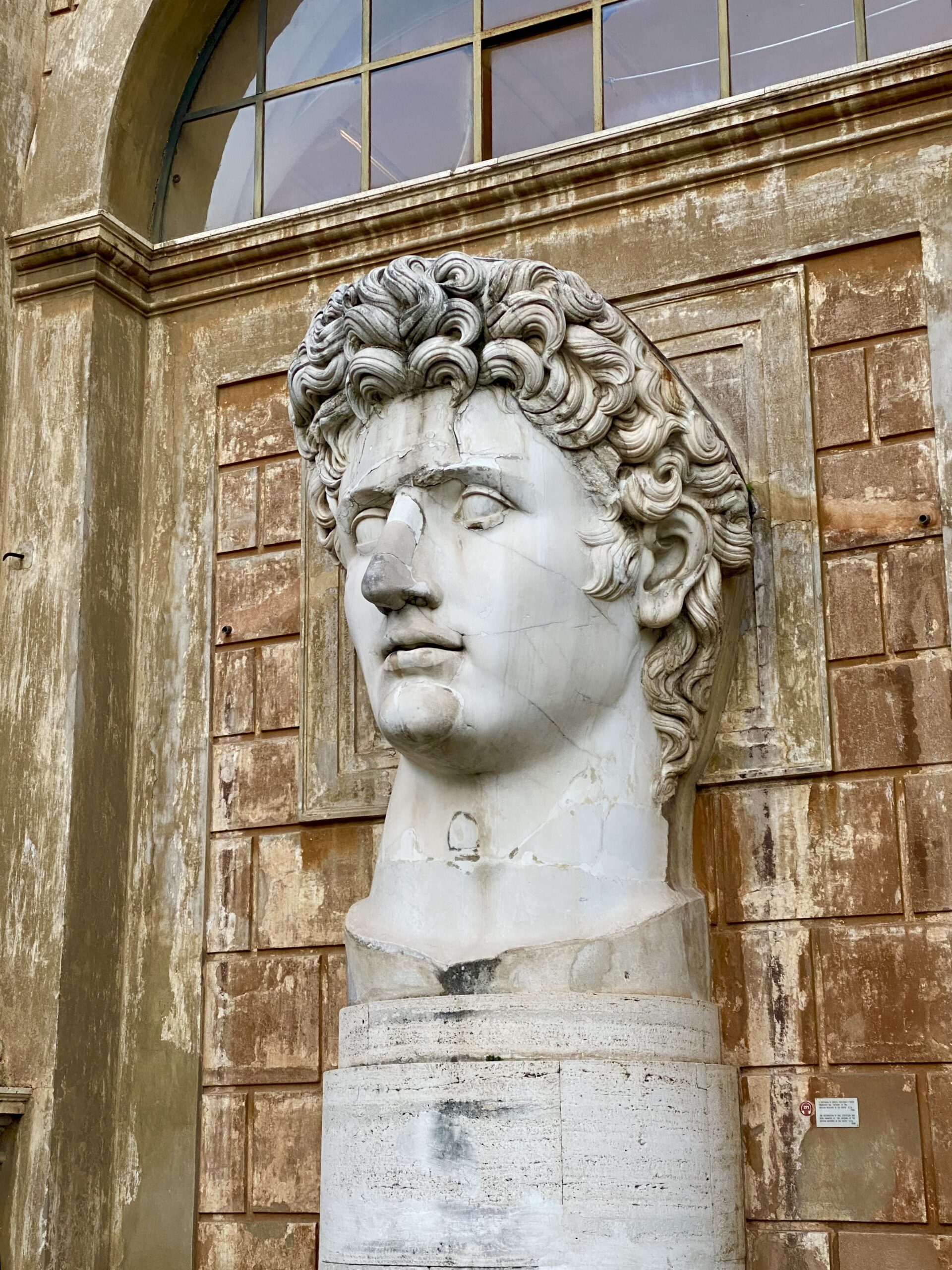
A good hair day for an ancient Roman
The Orbis Comarum
A hairstyle that seems to defy gravity, the Flavian-Trajanic orbis comarum (circle of hair) looks like a halo of curls. Its height is impressive, almost matching that of the face. Though this arrangement looks like an impossible stand of individual curls, in fact, hair archaeologist Janet Stephens believes this look was achieved by cutting your hair into a mullet, teasing your curly bangs, and then stabilizing them with sewn thread. The back is also spectacular, featuring an intricate braided wreath bun. Martial mentions this hairstyle—and the cruelty of the upper classes—in Epigrams when a mistress, Lalage, strikes down her ornatrix with a mirror after seeing one errant curl. You can visit the Fonseca Bust—a hopefully kinder woman from the early 2nd-century AD—in the Hall of Emperors inside the Capitoline Museums.

"The Orbis Comarum"; the Fonseca Bust in the Capitoline Museums; Courtesy of Mark Landon, CC BY 4.0, via Wikimedia Commons
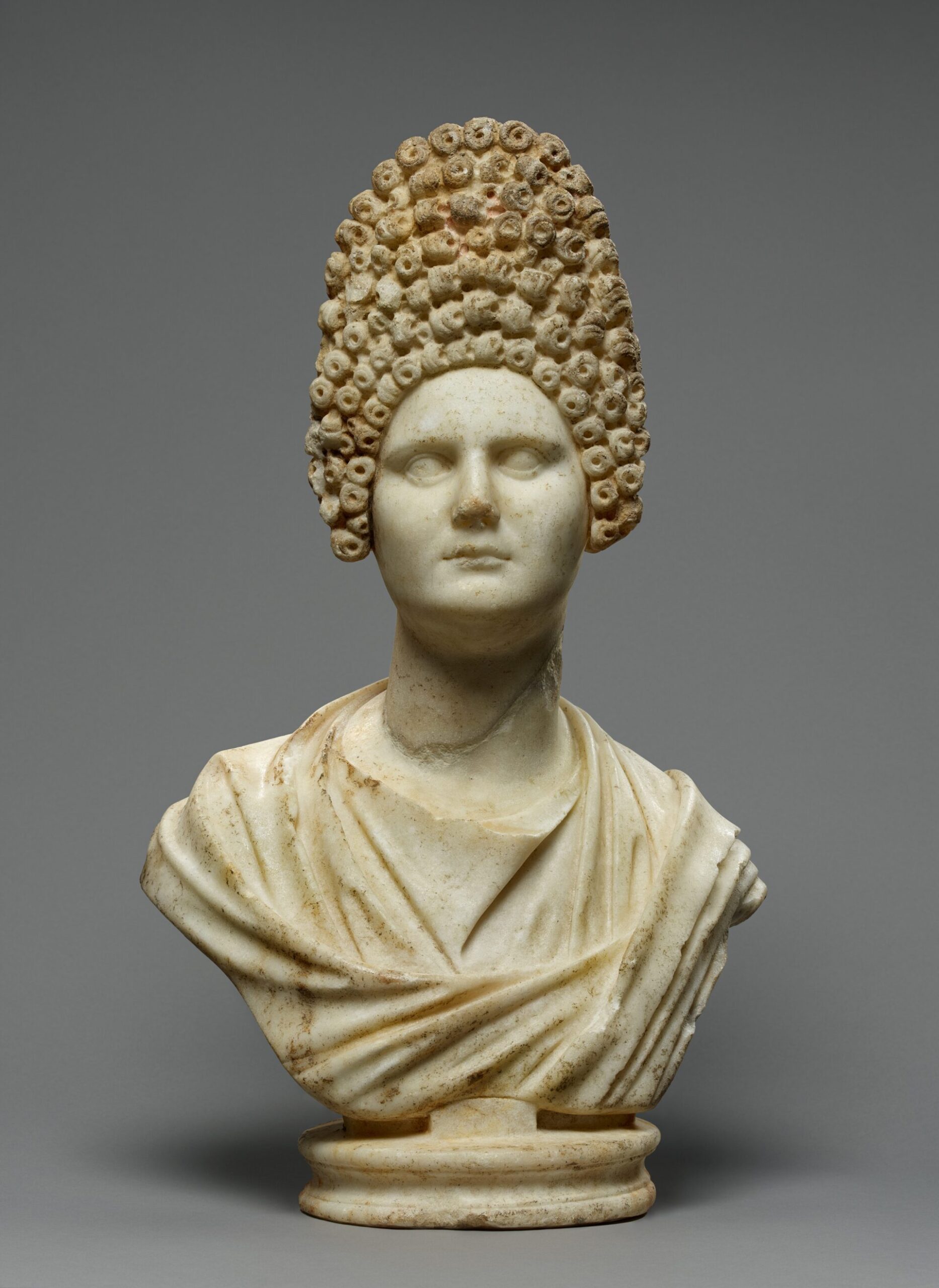
"The Orbis Comarum", Bust of a Flavian Woman; Courtesy of Getty Villa, CC0, via Wikimedia Commons
The Flatbread Top
Faustina the Elder’s signature ’do is chic from the front and incredibly intricate from the sides. This 2nd-century AD empress liked a middle part centered on her nose with tiers of waves pulled back. A loose plait rose from the nape of her neck and was piled on the top of her head like a like a stack of Umbrian torta al testo. Faustina died only two years after becoming empress, but her husband Antoninus Pius made sure she would be remembered, proclaiming her a goddess and churning out statues and coins of her likeness. Her hairstyle became so iconic that she was a muse for Renaissance and Neoclassical artists like Lorenzo Ghiberti and Antonio Canova. Last year, the Gallerie d’Italia Vicenza even held an exhibit on women’s hairstyles in honor of Faustina’s braids.
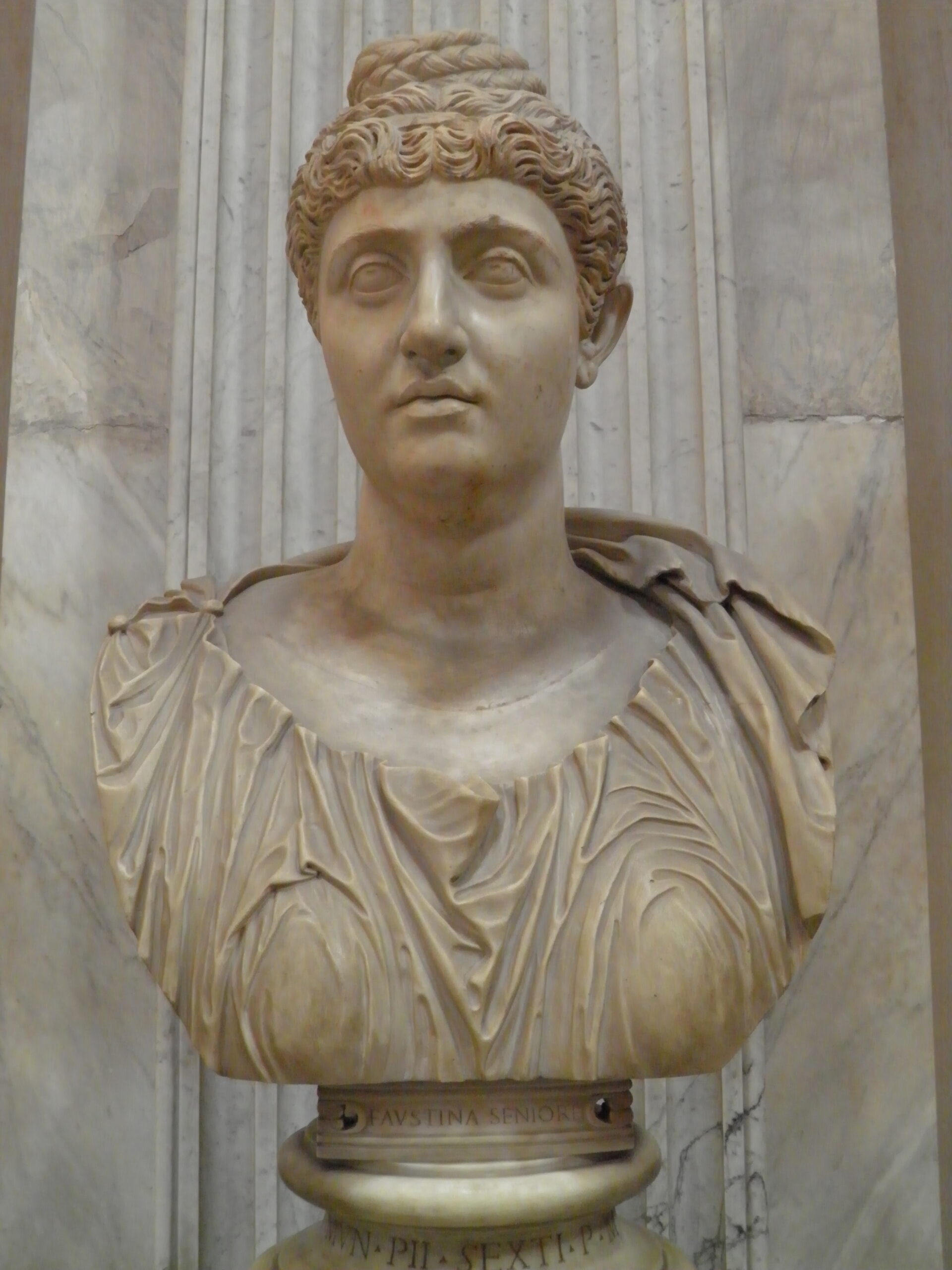
"The Flatbread Top"; Faustina the Elder; Courtesy of Vatican Museums, CC BY-SA 2.0, via Wikimedia Commons
The Not-My-Mom Chignon
As daughters often do, Faustina the Younger rejected her mother’s extravagant style to create a look all her own. Hers is much more restrained: finger waves cascade from a center part and are pulled back into a braided chignon at the nape of her neck. Throughout her life, Faustina the Younger experimented with more and less elaborate versions of this hairstyle. This simple rendition, viewable at the Uffizi Galleries in Florence, is from her later life, adapted to her role as a mother of 14 (!). This unfussy hairdo was well suited for joining her husband Marcus Aurelius on military tours of the empire (she was, in fact, the first empress to be deemed Mater Castrorum, Mother of the Camp). It may also be the hairstyle she died in, as she unfortunately met her end at such an army camp in Cappadocia.

"The Not-My-Mom Chignon"; Roman Empress Faustina the Younger; By Francesco Bini - Own work, CC BY-SA 4.0, https://commons.wikimedia.org/w/index.php?curid=146905166
The Braided Pillbox
In 2014, Vogue published a photo of Kate Middleton in a red ensemble, heralding “the Return of the Pillbox Hat,” the chic millinery made famous by 1960s American First Lady Jackie Kennedy. But Kate was really heralding the return of a hairstyle all the rage in the mid-2nd century AD: the tower of braids. This coiffure, as seen on this bust of a woman at the Walters Art Museum, is constructed by winding parallel braids round and round at the top of the head, forming a sort of braided hat. Inside the jaw-dropping mosaics of Sicily’s Villa Romana del Casale, you’ll spot another ancient pillbox: a soldier wearing a pileus pannonicus, Roman military headgear that evolved into the hat Jackie and Kate famously wore. And since this mosaic dates to the 4th century AD, the hair aficionado has to wonder: were the troops inspired by the Roman ladies, or vice versa?
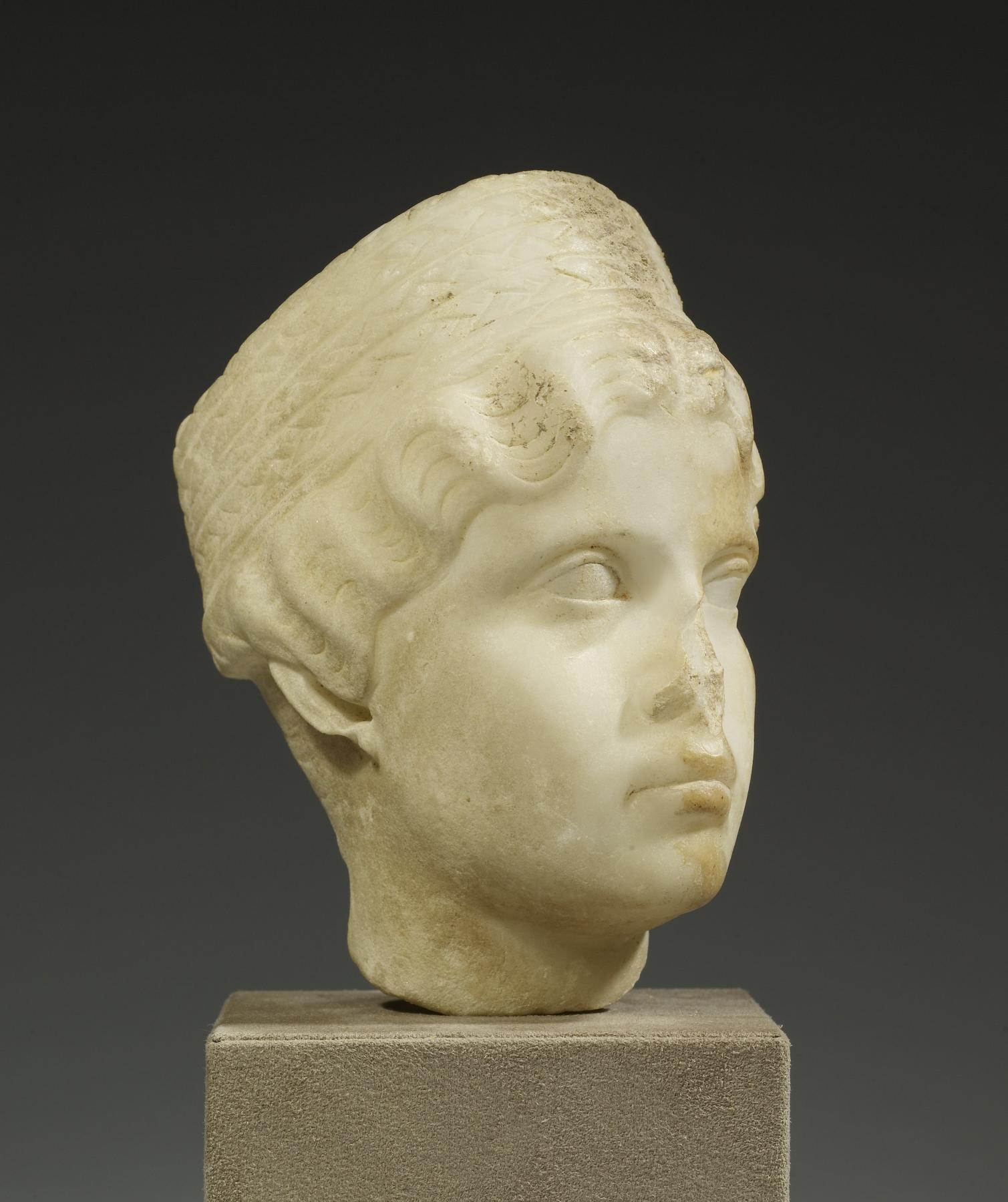
"The Braided Pillbox"; Head of a Woman, mid 2nd century CE. Courtesy of The Walters Art Museum. Museum purchase, 1957
The Cocker Spaniel
In the longest hairstyle of this roundup, wavy hair falls from a middle part until just below the chin, and would fall further—I imagine to the bicep at least—if it weren’t folded back on itself, braided, and pinned to the back of the head. The resulting profile looks much like a cocker spaniel. Look at stills from the 2019 live action remake of Lady and the Tramp, zoom in on Lady’s ears, and you’ll see what I mean. The back of this hairstyle is the signature column silhouette of the 3rd and 4th centuries AD, worn by empresses like Otacilia Severa and Herennia Etruscilla: a wide braid or twist folded from the nape of the neck and fastened to the back of the head, creating a very flat, just-got-out-of-the-shower shape. You can visit this mid-3rd century AD bust of a woman at the Metropolitan Museum of Art in New York City.
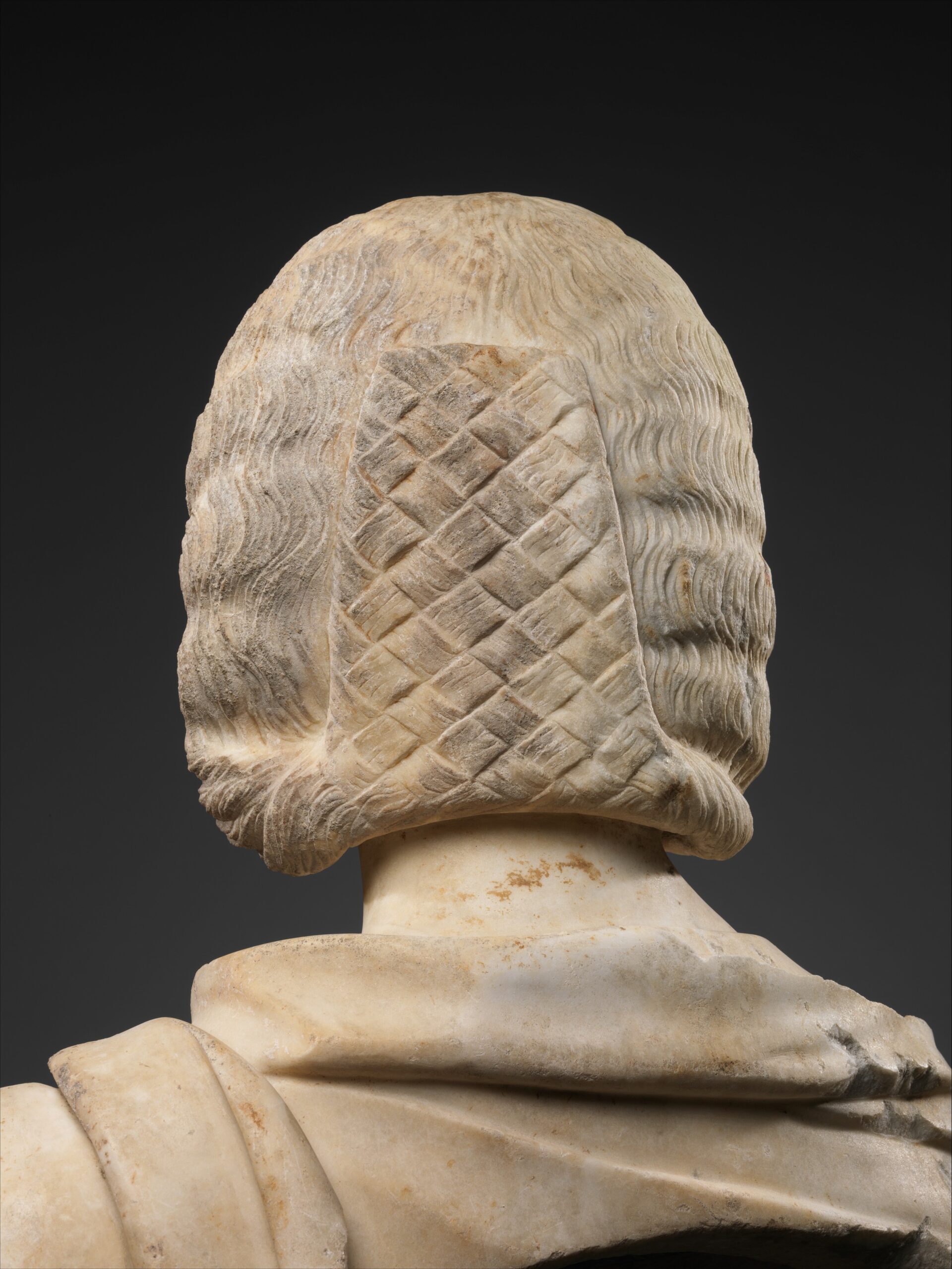
"The Cocker Spaniel"; Marble bust of a woman, mid–3rd century A.D. Roman, Late Imperial Marble; H. 25 5/8 in. (65.1 cm) The Metropolitan Museum of Art, New York, Rogers Fund, 1918 (18.145.39) http://www.metmuseum.org/Collections/search-the-collections/250701
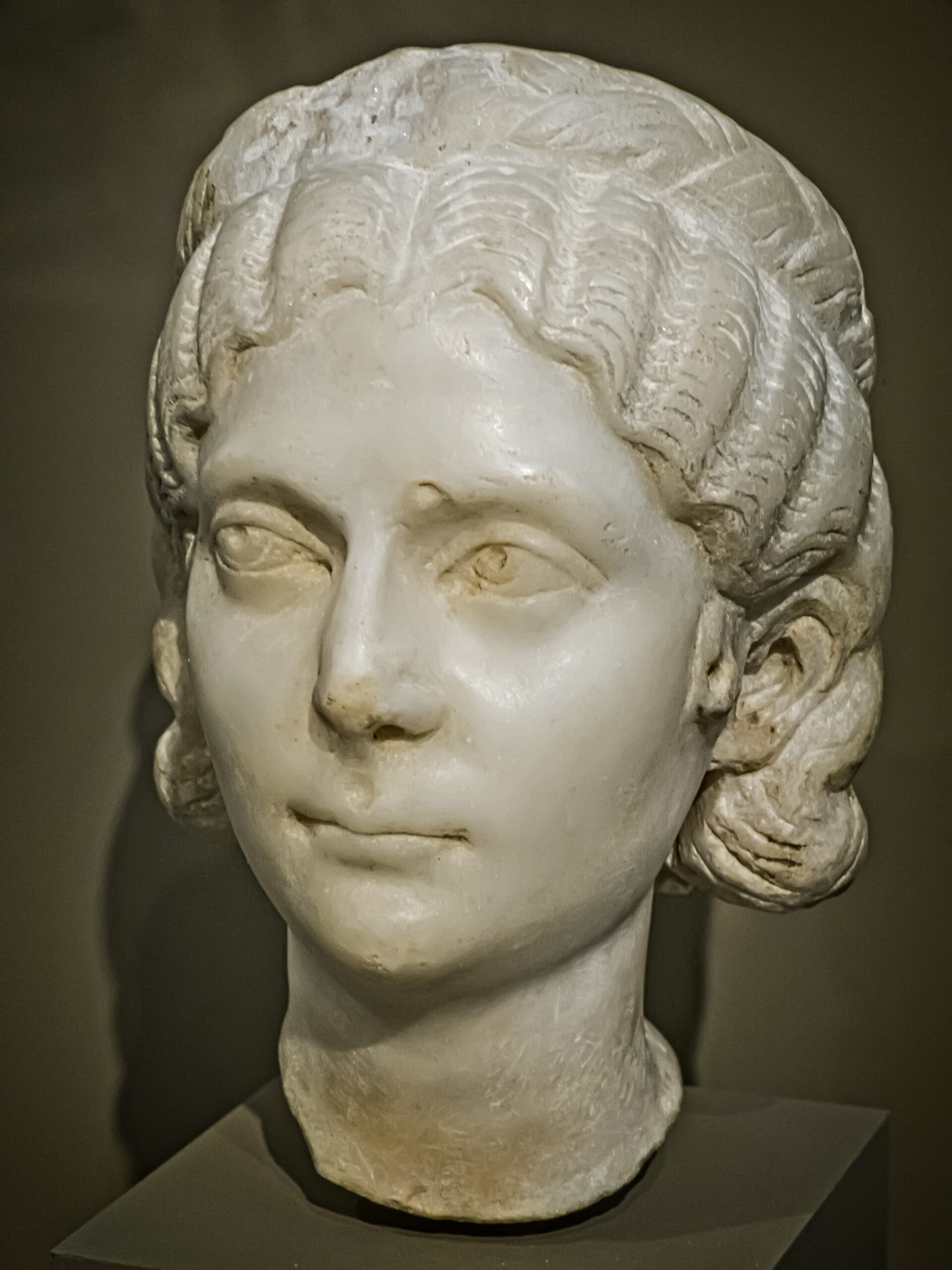
Possibly Empress Otacilia Severa; Courtesy of Mary Harrsch - Own work, CC BY-SA 4.0
The Early Emperor Crop
Though the emperors Caesar, Augustus, and Trajan were the most powerful men of their times—they literally controlled an empire—their combed-forward fringe always reminds me of a young lad in a tracksuit. All the emperors until Hadrian (naughty neckbeard Nero notwithstanding) paired this short-haired look with a clean-shaven face. This was an act of bravery in itself, as your tonsor (ancient Roman barber) could kill you very easily—think of how frighteningly close that razor is to your neck. This fear was so overpowering that both Commodus and Dionysius the Elder opted for singeing their hair and beard over equipping their barbers with blades. We’re often worried about trusting our hairdressers; think about how much you had to trust your tonsor.
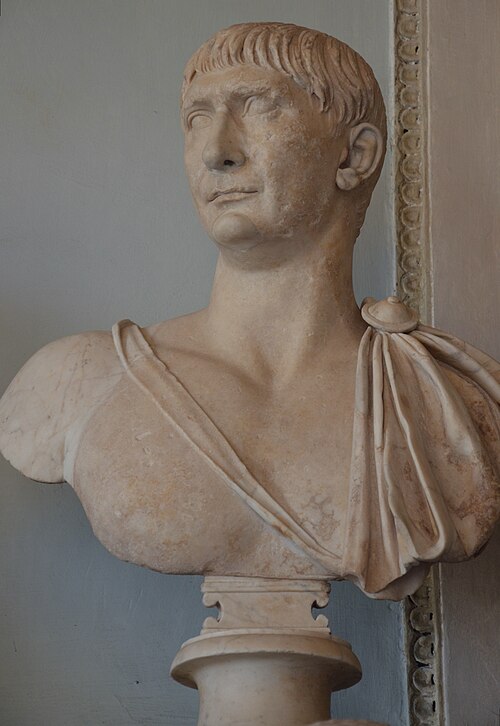
"The Early Emperor Crop"; Bust of Traianus (Musei Capitolini); Carole Raddato from FRANKFURT, Germany, CC BY-SA 2.0 , via Wikimedia Commons
The Canadian Lumberjack
Emperor Hadrian was a very effective ruler: he constructed an impressive defensive wall in England, rebuilt the Pantheon, and codified Roman law. Even more importantly, he brought back the beard! Paired with longer, more free-flowing hair, this look evoked Hadrian’s interest in all things Greek, from philosophy to male lovers (Hadrian and Antinous are arguably the most famous gay couple of ancient Rome). To me, the curly hair and bear evokes more Canadian Lumberjack than Greek god. The Antonine dynasty continued to embrace this style, including Antoninus Pius (Faustina the Elder’s husband), Marcus Aurelius (Faustina the Younger’s husband), and the man who took it to its greatest heights, Lucius Verus.

"The Canadian Lumberjack"; Marcus Aurelius; Courtesy of Daniel Martin - Photothèque du musée Saint-Raymond, CC BY-SA 4.0
The Kindergarten Pasta Craft Look
This Flavian hairstyle, circa 80-100 CE, is wild. In the front, decorations eerily similar to rigatoni are set upon a pillowy bed of curls resembling the anelli you’d find in a Sicilian timballo. The back is more restrained, with dozens of small braids pulled back and coiled into a substantial bun. The three part combination reminds of Christmas crafts in elementary school—especially the angel pasta ornaments where farfalle subbed in for wings. But don’t be fooled by the homemade pasta appearance: a sculpture of a woman sporting this ’do recently sold from Sotheby’s for £150,000-£250,000 (€172,000-€286,000)!


